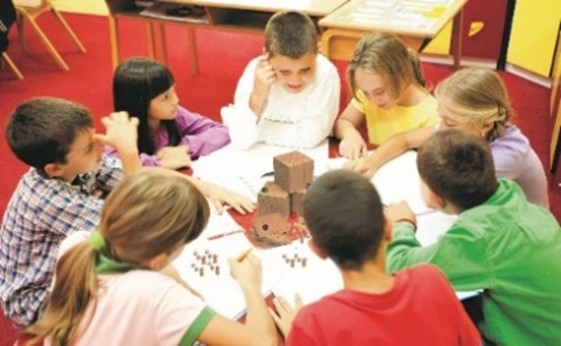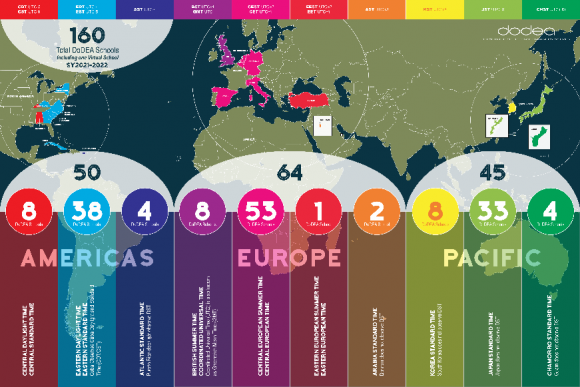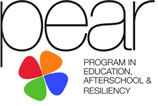“I found it, I found it . . . yes all the way in Texas“ was Dr. Kristen Wilkins phone call from CEC in San Antonio to colleagues back in Isle of Wight, Virginia. A chance meeting at the Moving with Math booth had her so excited that she had finally found the curriculum that they had been searching for to support Tier 3 students from Kindergarten all the way through pre-Algebra and Algebra 1. “We have been searching and searching for a research-based program that was appropriate as our students with disabilities grew, but most intervention programs didn’t go past 8th grade.” Speaking at a recent ESEA Conference, Dr. Wilkins outlined their district’s journey and their growing partnership with Math Teachers Press.
The Pilot
After the CEC conference, Dr. Wilkins and her team reviewed the Moving with Math programs and were excited that they were aligned with Virginia SOLs. They decided to pilot Moving with Algebra in their high schools as they knew the programs would work in elementary grades, but were really curious how it would do in high school.

One of their main concerns was getting their high school teachers to buy into a new curriculum. The team assured the teachers that this was really going to help them reach their students. The resource materials and manipulative kits arrived at their district and the teachers were excited. They said ”These are not brightly colored manipulatives that look like they belong in an elementary setting. I can actually bring these out in front of a 16-year-old and not have them laugh at me and walk out of the room.” That was the “buy in” they needed from their high school teachers. The teams met to align IEP goals with curriculum and state standards and found that it was easy to go in and target exactly the skills their students needed. They used the program to pre-teach the conceptual standards, building background knowledge and capacity in the students and teachers.
She highlighted their use of the Online Assessment Suite and how it made it so easy for the teachers to pinpoint missing skills. She mentioned the Students Grouped by Objective report as one of their favorites as it helped teachers set up their small groups instantly. If they needed to build foundational skills the reports pointed them to the scaffolded instruction that would help prepare the students. The reports also allowed them to align the results with student IEP goals and progress standards to determine next steps. At the end of the school year, the pilot was deemed a success and the district team gathered to plan a Fall implementation for all Special Education students in grades 3-12.
Expand to all Special Education Students
In August of 2024, Moving with Math worked with the district to conduct two in-person implementation trainings with all the elementary and high school teachers and support staff. Teachers left the training with all the resources, notes and information they needed to be ready to “level” their students on the first day of school and hit the ground running. Teachers learned how to lead the engaging Concrete-Representational-Abstract lessons and even the high school teachers, who were at first reluctant to use manipulatives, were excited to begin to work with all their students.
Continuing Partnership with Customer Service
Dr. Wilkins noted that the district was so pleased with the use of the program with their students with disabilities that they were expanding the use to other students who could benefit from the C-R-A instruction. In their ongoing efforts to support teachers there have been additional professional development sessions diving deeper into the manipulative lessons. The district is also expanding their use of Moving with Math to the Extensions grade level program for summer school. She also commended the high level of customer service throughout the process. From her initial meeting, and throughout the past year, the team at Moving with Math has consistently been available to support them. She was very pleased with the level of commitment to their success, from having materials delivered in a timely manner to quick access for implementation questions and technical support. We look forward to our continued partnership to help the students and teachers succeed with their math goals.







 Promote Questioning Throughout the Lesson
Promote Questioning Throughout the Lesson Manipulatives are used in the introductory part of the lessons and provide an engaging way to begin classroom discussions. When students are introduced to the base ten blocks, they are asked to find similarities and differences between the blocks. “How are the blocks alike? How are they different? Questioning helps to introduce mathematical ideas and concepts as well as build on those ideas throughout the lesson.
Manipulatives are used in the introductory part of the lessons and provide an engaging way to begin classroom discussions. When students are introduced to the base ten blocks, they are asked to find similarities and differences between the blocks. “How are the blocks alike? How are they different? Questioning helps to introduce mathematical ideas and concepts as well as build on those ideas throughout the lesson. Foster Small Group Conversation about Word Problems
Foster Small Group Conversation about Word Problems  Explicitly Teach How to have Math Conversations
Explicitly Teach How to have Math Conversations
 In a recent article in a December District Administration newsletter, Matt Zalaznick wrote about two strategies that were being highly touted approaches to reverse COVID learning loss by equity experts on a National Press Foundation panel. In his article he quoted several of the panel members.
In a recent article in a December District Administration newsletter, Matt Zalaznick wrote about two strategies that were being highly touted approaches to reverse COVID learning loss by equity experts on a National Press Foundation panel. In his article he quoted several of the panel members.








